We are anchored off Grytviken, and it’s the boss’s birthday.
Grytviken is a former whaling station on the north coast of the island of South Georgia. It’s also where Ernest Shackleton—perhaps the most recognized name in Antarctic history—is buried. Today, February 15, is his birthday. Furthermore, the person enlightening me is Shackleton’s second cousin and the onboard lecturer, Jonathan. In fact, aboard the ship are a swarm of Shackletons: Jonathan’s wife, brother, sister-in-law, and extended family.
Scattered clouds hug slate gray peaks covered in vestiges of snow. The water is a milky, glacial blue, and a steady shore breeze whips up froth. Passengers gather on the bow as Jonathan marks the occasion with some words about his cousin. He wears a replica of the thick wool sweater that Ernest once wore, and the mast flies the Shackleton flag—red and yellow. It flaps furiously.
Many are fascinated by the story of the legendary explorer. But for some assembled here, Ernest was family. Jonathan wells up during his words about his cousin.
“Ernest wasn’t a religious man, but he believed in providence.”
In the mountainous bay, Grytviken sits locked in time, the rusting remains long out of use: once a slaughterhouse for whales, now an open-air museum of whaling vessels run aground, processing plants, and oil tanks.
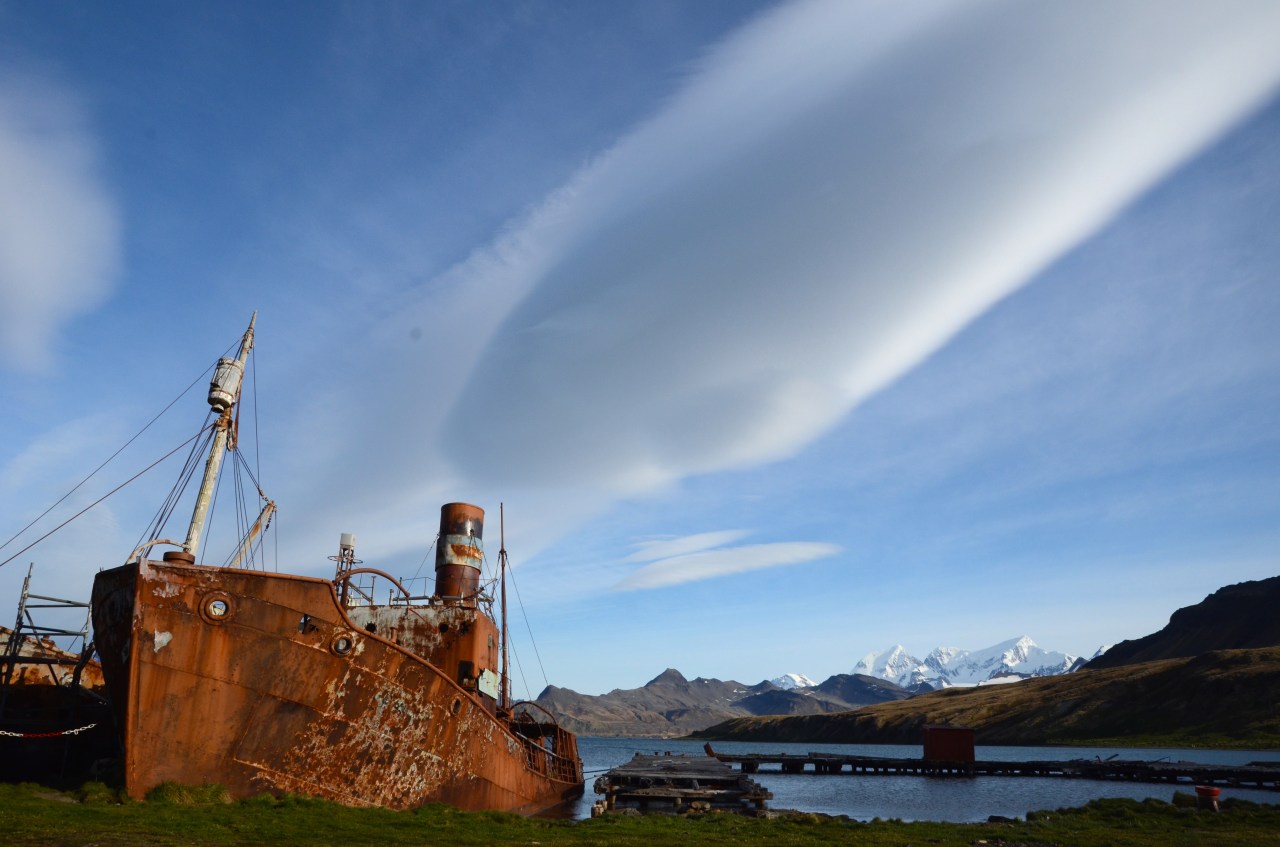
When Shackleton arrived in 1914, he found a very different scene. Grytviken was bustling, and the proliferation of whale flesh, fat and bone, smoke and smell, and men working in such industrial carnage must have been impressive. The lasting effects of whaling around South Georgia mean that sighting a southern right or blue whale is rare.
In town I find a museum, church, and post office. Just outside of town there is a fisheries research station and government office. South Georgia is a British Overseas Territory.
On the other side of the bay, amid the wreckage, I pass regal king penguins, beaks aloft, standing sentinel. Young, male Antarctic fur seals bark and make bluff charges. Ahead is a graveyard surrounded by a white fence.
Since closing in 1966, new residents have reclaimed the town, and between the cemetery and myself are three enormous elephant seals, lying like sardines. Stepping by, they look at me with their enormous inky eyes and snotty protuberant noses; they hiss and grumble, displaying bright pink mouths and sparse teeth.

Inside the fence a crowd of yellow parka–wearing passengers has gathered. They circle Ernest’s headstone. Jonathan’s tall figure and smock of white hair stand out as he leads a graveside tribute. Everyone holds a glass. Tradition has it that visiting ships toast the boss with a spot of Irish whiskey.
I find myself wondering what Ernest would have made of this adulation. Onboard, I catch up with Jonathan for his thoughts.
“I think he would have been amused and flattered. And he might have been humbled by it … or maybe uncomfortable.”
I ran into Jonathan, an affable Irishman with a spark in his eye, before the voyage in a liquor store in Ushuaia, Argentina.
On the south end of Tierra del Fuego, Ushuaia is the gateway to Antarctica. Despite the city’s remoteness, a walk down its Avenue San Martín reveals innumerable gift shops, tour operators, seafood, asado restaurants, and a plethora of nationalities waiting to board ships to Antarctica.
This southernmost city of South America is just over 600 miles north of the Antarctic Peninsula. Only the tempestuous Drake Passage—a two-day crossing—separates the two continents.
Ernest Shackleton boarded his expedition ship, the Endurance, in Buenos Aires. It had arrived from Plymouth—a journey of over two months at sea. From Buenos Aires it sailed to South Georgia.
Today a flight from New York to Buenos Aires takes 11 hours, then four more to Ushuaia.
While cruise ships offer views of Antarctica, only smaller expedition ships can navigate the narrow waterways and allow passengers to step on the seventh continent. Voyages focus on education, offering daily lectures, and even though there are comforts such as saunas and spas, there are no casinos, malls, or magic shows. Passengers enjoy buffet meals and, thanks to modern refrigeration, mixed baby greens and fresh fruit. But it’s no vacation—mornings are early, days are full, and by 10 p.m. it’s bedtime.
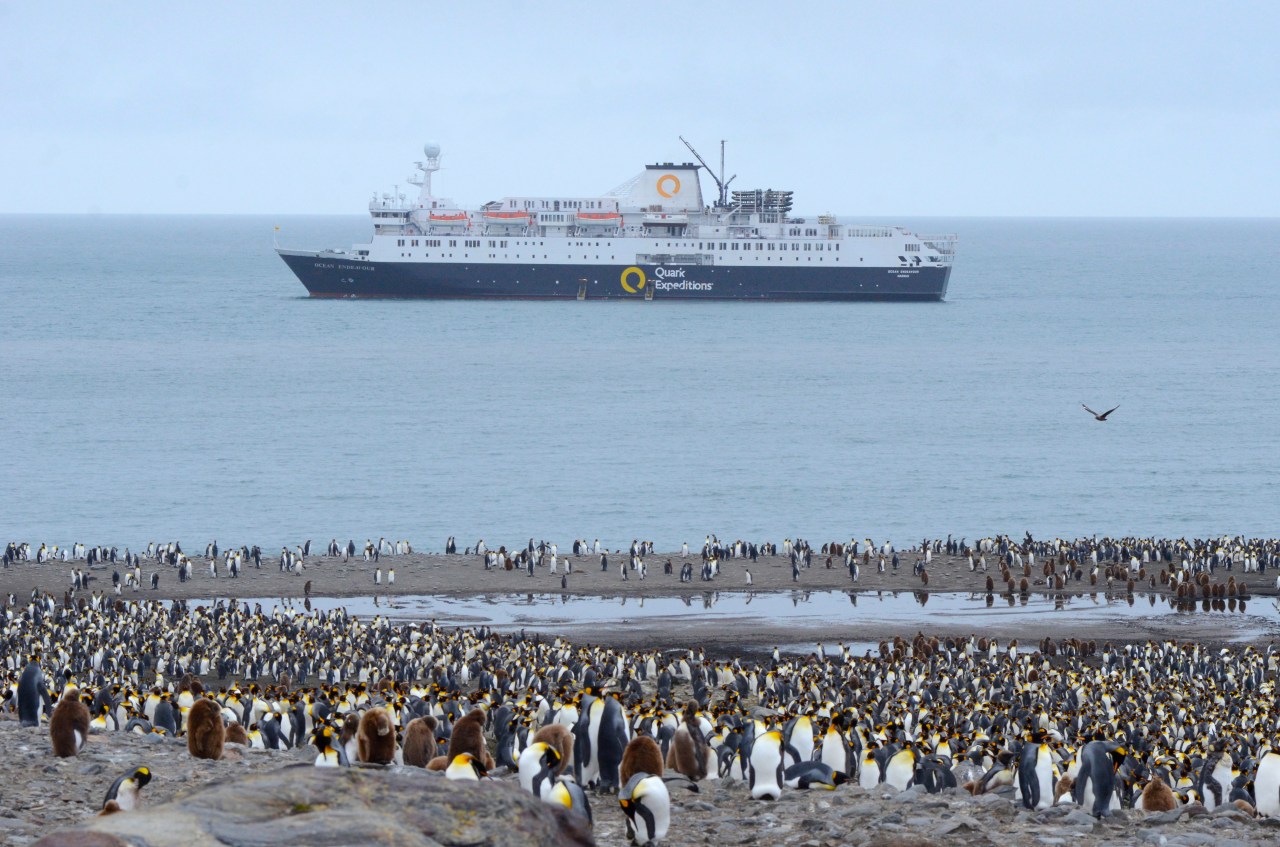
By far the most daunting part of Antarctic travel is the sea. Crossing the infamous Drake Passage can mean two days of nausea.
Even so, Shackleton would have baulked at the comfort and speed of modern Antarctic travel.
The Endurance arrived in Grytviken in November 1914 to make final preparations to cross the Southern Ocean. There was an unusual amount of pack ice, and whalers warned them to wait. But the expedition departed on December 5. Only two days out, midocean, they encountered it. Today ice is much farther south.
Two and a half months later, they were still fighting their way through the ice when they reached 76 degrees 58 minutes south latitude—as far as they’d make it. They were nowhere near the continent and frozen in for the winter.
This was Shackleton’s third visit. With the South Pole flagged, he was seeking a new first. The Imperial Trans-Antarctic Expedition’s mission was to cross the continent, but without ever landing, it had already failed.
Today a 10-day voyage to the Antarctic Peninsula fits easily into a two-week vacation. Those really short on time can skip the Drake Passage for a fly-in cruise. But in Shackleton’s time the journey typically took about two years.
Shackleton was ready to get stalled in the ice. Onboard stores of pemmican, biscuits, and anything else dried, canned, or powdered ensured that the crew wouldn’t starve. Seals and penguins were also easy to clobber.
After an icebound winter, September arrived. Spring should have brought optimism—it didn’t. The Endurance, even with its reinforced oak bow 52 inches thick, was crushed by the shifting ice floes, and sank in late November, converting a waiting game to one of survival.
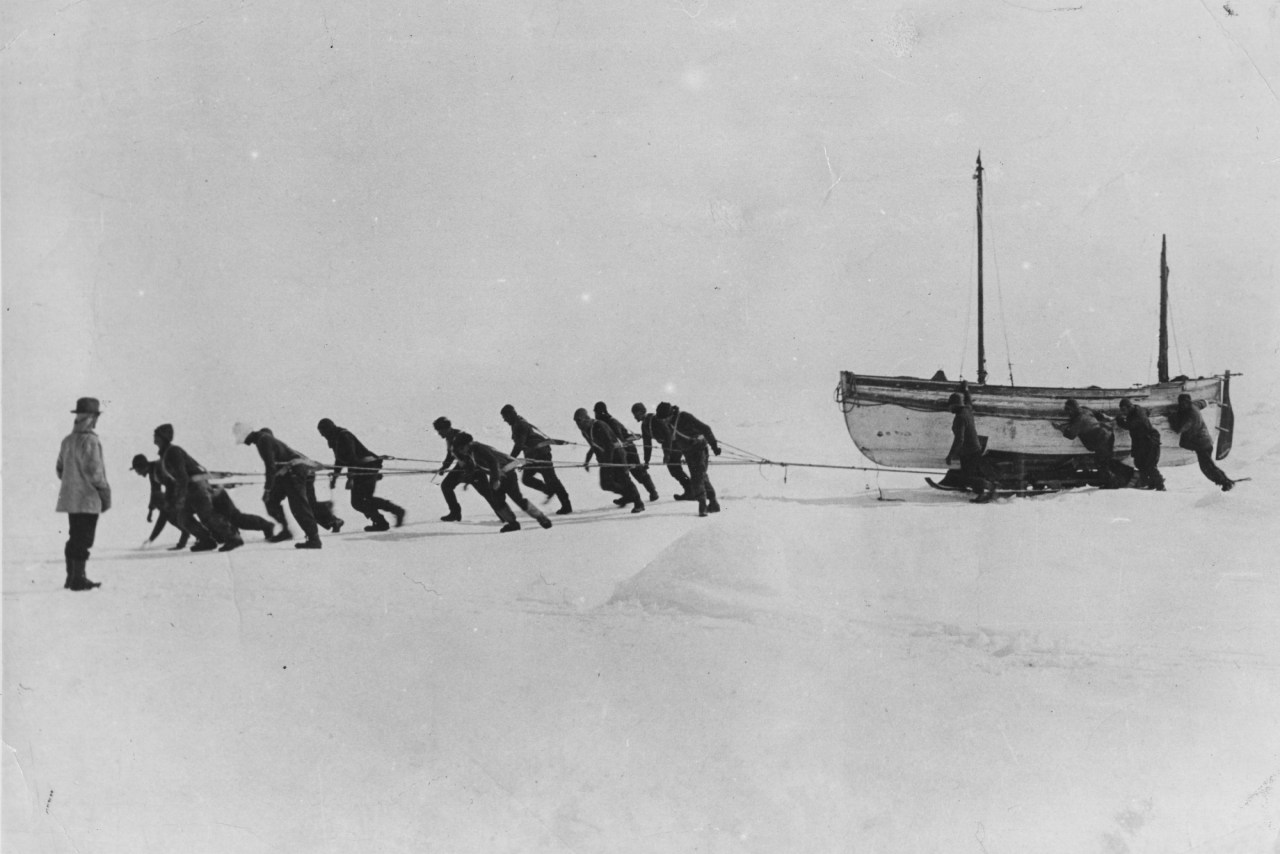
The crew took to the ice. For the next three months they drifted north toward the Antarctic Peninsula. At 60 miles from land, their ice floe, named “Camp Patience,” broke up, and they had to scramble to lifeboats.
It was February, more than a year since they left South Georgia, and autumn loomed. They rowed, portaged over ice, got drenched, and suffered temperatures of minus 30 degrees Celsius. By sheer will they reached Elephant Island.
Two days from South Georgia, our ship, the Endeavor, reaches Elephant Island. Located off the tip of the peninsula, the island is far from inviting, even by Antarctic standards. It is too rough to land, and passengers crowd the decks to photograph and squint through binoculars at the pittance of beach that was the home of the Endurance’s crew. Winds blow at 60 miles an hour. Living here for four months under lifeboats, eating penguins, is unthinkable.
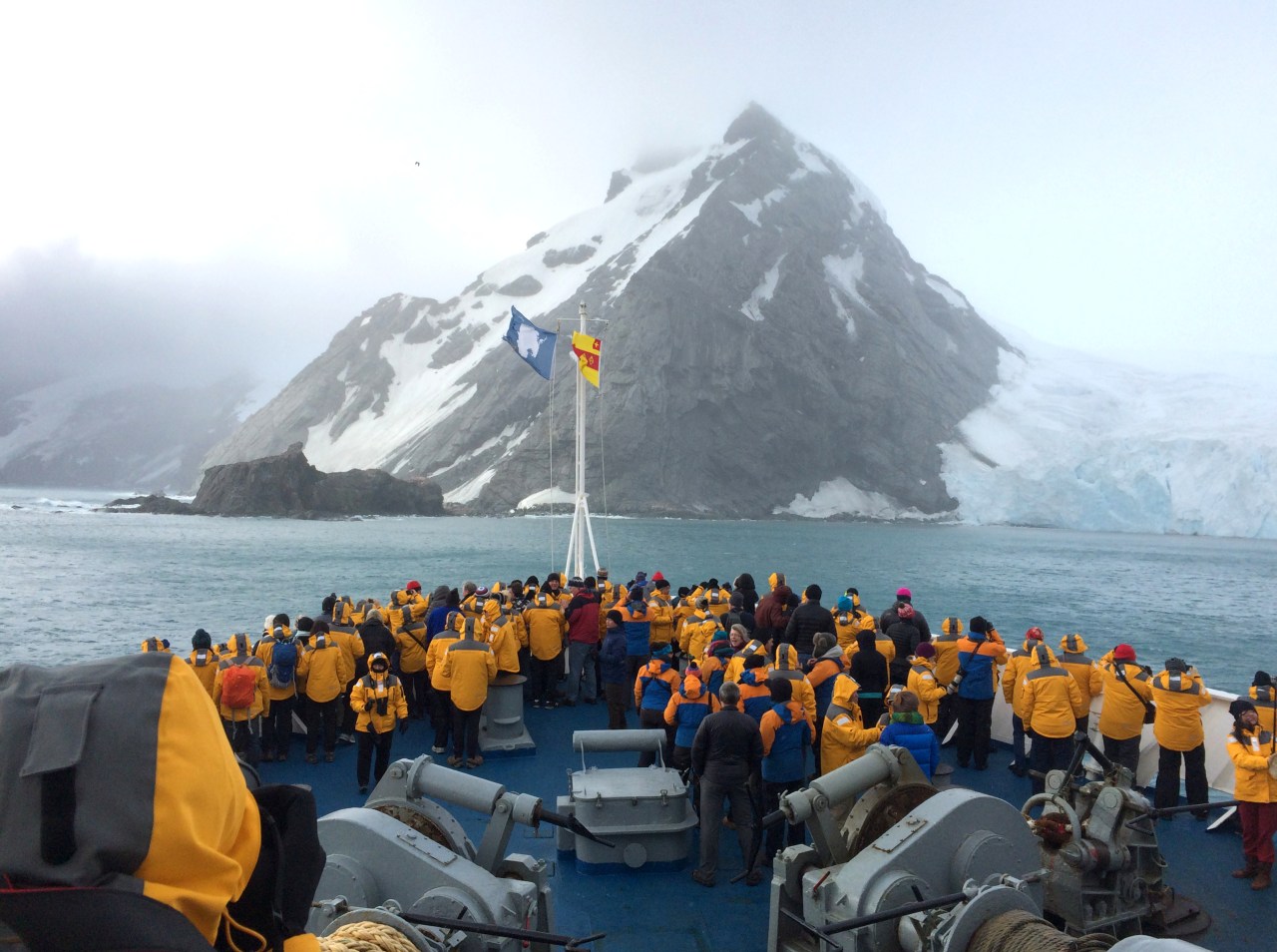
It was clear that help would never arrive here. So Shackleton and five others set off in a lifeboat, the 22.5-foot James Caird. Their goal was South Georgia, 800 miles across the most treacherous water on the planet.
It takes our 453-foot vessel two days at 15 knots, in calm seas. The James Caird left on April 24, and with only oars and sails it weathered hurricane-force winds. Navigating by stars and sextant, they pulled into a tiny cove on South Georgia’s rugged south coast on May 10.
Rising out of the ocean, South Georgia resembles the Alps. Expeditions today stick to the sheltered north coast, where in Shackleton’s time whaling stations were set up. Knowing this, they set forth to traverse the rugged, glacial spine.
After three days a rescue vessel set off for the rest of the men on Elephant Island set off, but ice blocked its access. It would take three more attempts, with different ships, before the crew was rescued. They had spent nearly four months on the island. Every man that set off from Buenos Aires with Shackleton lived.
On January 5, 1922, Ernest Shackleton died of a heart attack near South Georgia, at the beginning of his final expedition. Whaling continued for decades after his death, but it wasn’t long before it was replaced with a new industry.
Commercial tourism to Antarctica began in the 1950s with Argentine and Chilean naval vessels. The industry took off from the ’60s to the ’90s with private companies.
From 1966 to 1990, fewer than 2,000 tourists visited Antarctica annually. In the 2015–16 season alone, nearly 40,000 ventured to the continent. Currently most visitors arrive by ship from Ushuaia, but New Zealand is also a departure point. From there, planes fly to McMurdo Station and the South Pole, and most recently an aurora australis flight where passengers witnessed the psychedelic light display from window seats.
“What do you think Shackleton would have made of modern Antarctic travel?” I asked Jonathan.
“I think he would have been horrified by the luxury of it all, but flattered that they worship his memory,” he replied.
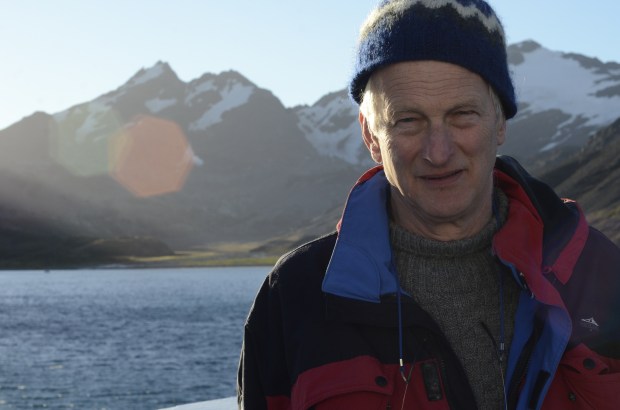
In Shackleton’s era, Antarctica was a free-for-all. Whales and seals were slaughtered at will, and expeditions would routinely supplement their diets with the local fauna. In 1959 the Antarctic Treaty was signed. The international agreement dedicated the continent to peace and science. Then in 1991 the International Association of Antarctic Tour Operators (IAATO) was formed by expedition companies. They saw the value of this raw natural wonder, but also its vulnerability. Today IAATO members follow strict operating regulations to ensure Antarctica’s protection.
Before arriving in Antarctica, passengers are thoroughly briefed on the code of conduct. They must inspect and decontaminate all personal equipment, step into antibiotic solution between landings, and keep 5 meters away from penguins. They must leave only footprints, take only photographs.
Aside from tourism, people live in Antarctica. Innumerable bases from different countries dot the continent. And every year someone invents a new route to cross it.